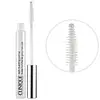What's inside
What's inside
 Key Ingredients
Key Ingredients

No key ingredients
 Benefits
Benefits

 Concerns
Concerns

 Ingredients Side-by-side
Ingredients Side-by-side

Water
Skin ConditioningCopernicia Cerifera Wax
Stearic Acid
CleansingPolybutene
Glyceryl Stearate
EmollientOleic Acid
EmollientAminomethyl Propanediol
BufferingAcrylates Copolymer
Panthenol
Skin ConditioningGlycerin
HumectantEthylhexylglycerin
Skin ConditioningHydroxyethylcellulose
Emulsion StabilisingChlorphenesin
AntimicrobialSodium Dehydroacetate
PreservativePhenoxyethanol
PreservativeSorbic Acid
PreservativeWater
Skin ConditioningOryza Sativa Cera
Skin ConditioningCopernicia Cerifera Cera
EmollientCera Alba
EmollientStearic Acid
CleansingCandelilla Cera
EmollientTriethanolamine
BufferingPalmitic Acid
EmollientAcacia Senegal Gum
MaskingPanthenol
Skin ConditioningSodium Polymethacrylate
Emulsion StabilisingHydroxyethylcellulose
Emulsion StabilisingPropylparaben
PreservativePEG/PPG-17/18 Dimethicone
EmulsifyingMethylparaben
PreservativeSimethicone
EmollientRayon
Polyquaternium-10
Tocopheryl Acetate
AntioxidantPolycaprolactone
StabilisingWater, Oryza Sativa Cera, Copernicia Cerifera Cera, Cera Alba, Stearic Acid, Candelilla Cera, Triethanolamine, Palmitic Acid, Acacia Senegal Gum, Panthenol, Sodium Polymethacrylate, Hydroxyethylcellulose, Propylparaben, PEG/PPG-17/18 Dimethicone, Methylparaben, Simethicone, Rayon, Polyquaternium-10, Tocopheryl Acetate, Polycaprolactone
Ingredients Explained
These ingredients are found in both products.
Ingredients higher up in an ingredient list are typically present in a larger amount.
Hydroxyethylcellulose is used to improve the texture of products. It is created from a chemical reaction involving ethylene oxide and alkali-cellulose. Cellulose is a sugar found in plant cell walls and help give plants structure.
This ingredient helps stabilize products by preventing ingredients from separating. It can also help thicken the texture of a product.
This ingredient can also be found in pill medicines to help our bodies digest other ingredients.
Learn more about HydroxyethylcellulosePanthenol is a common ingredient that helps hydrate and soothe the skin. It is found naturally in our skin and hair.
There are two forms of panthenol: D and L.
D-panthenol is also known as dexpanthenol. Most cosmetics use dexpanthenol or a mixture of D and L-panthenol.
Panthenol is famous due to its ability to go deeper into the skin's layers. Using this ingredient has numerous pros (and no cons):
Like hyaluronic acid, panthenol is a humectant. Humectants are able to bind and hold large amounts of water to keep skin hydrated.
This ingredient works well for wound healing. It works by increasing tissue in the wound and helps close open wounds.
Once oxidized, panthenol converts to pantothenic acid. Panthothenic acid is found in all living cells.
This ingredient is also referred to as pro-vitamin B5.
Learn more about PanthenolStearic Acid is a fatty acid. It is an emollient, emulsifier, and texture enhancer.
As an emollient, stearic acid helps soften skin. It aids the skin's protective barrier by preventing water loss. It also provides a gentle cleansing effect without stripping away natural oils.
Stearic acid may also be used to enhance the texture of products. It can add volume and stabilize ingredients such as water and oil. This can help water and oil ingredients from separating.
Sources of stearic acid include animal or vegetable fats/oils such as coconut or shea. It can be naturally found in butter, cocoa butter, shea butter, vegetable fats, and animal tallow.
This ingredient may not be Malassezia folliculitis, or fungal-acne safe.
Learn more about Stearic AcidWater. It's the most common cosmetic ingredient of all. You'll usually see it at the top of ingredient lists, meaning that it makes up the largest part of the product.
So why is it so popular? Water most often acts as a solvent - this means that it helps dissolve other ingredients into the formulation.
You'll also recognize water as that liquid we all need to stay alive. If you see this, drink a glass of water. Stay hydrated!
Learn more about Water